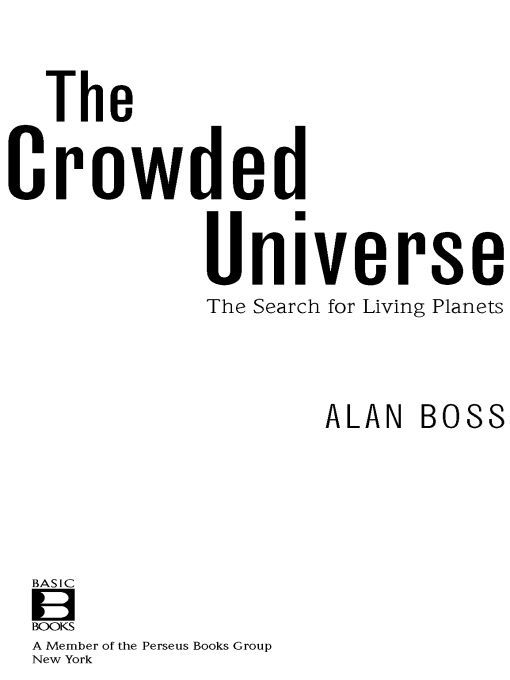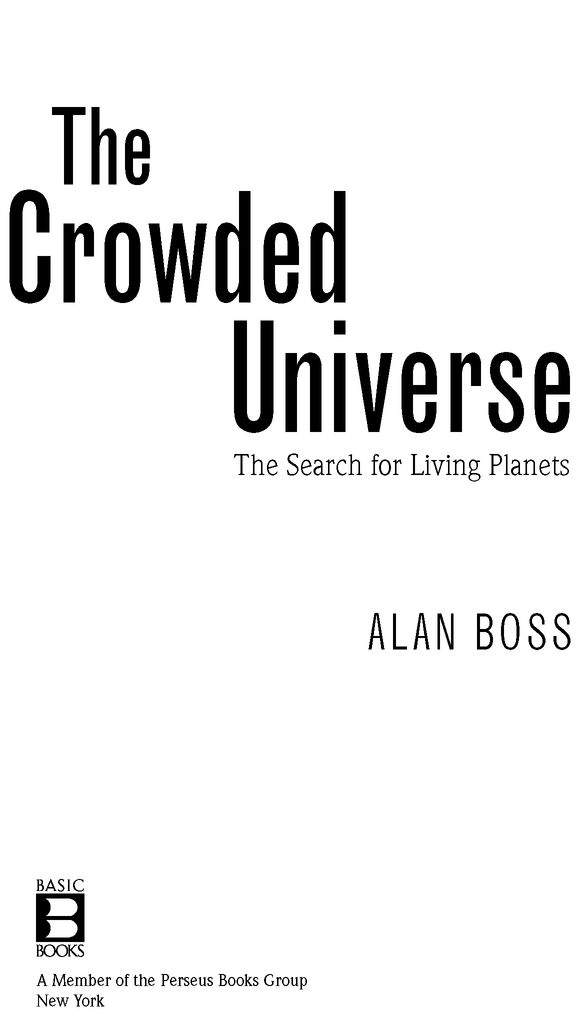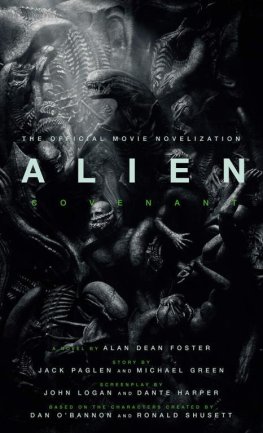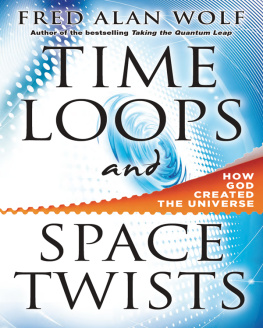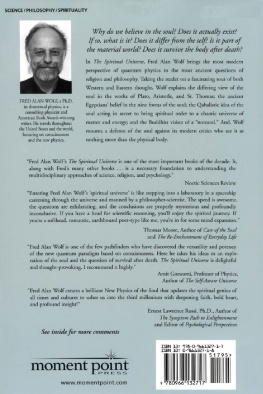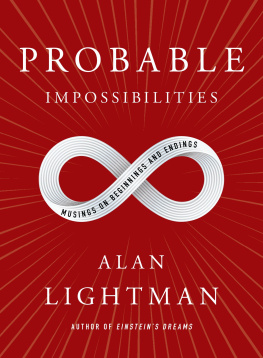Table of Contents
TO GEORGE WETHERILL,
the physicist who evolved into an astrobiologist
ACKNOWLEDGMENTS
This book would not have been possible without the support and enthusiasm of my agent, Gabriele Pantucci, and of my editors at Basic Books, William Frucht and Lara Heimert.
Alan Boss Washington, DC August 4, 2008
PROLOGUE
A New Space Race
The occurrence of Earth-like planets may be a common feature of planetary systems.
GEORGE W. WETHERILL (SCIENCE, AUGUST 2, 1991)
A new space race is under way. It is not between the United States and Russia, or between the United States and the newly space-faring nations China and Japan, but between the United States and Europe. And the Europeans have a head start of more than 2 years. Whoever wins, we are on the verge of discovering how frequently Earth-like planets occur in our neighborhood of the Milky Way Galaxy.
In early 2009, the National Aeronautics and Space Administration (NASA) will launch the Kepler Mission, the first space telescope designed specifically to detect and count the number of habitable worlds orbiting stars like our Sun. In late 2006, European scientists launched a similar but smaller space telescope, CoRoT (Convection, Rotation, and Planetary Transits), designed primarily to study the physical structure of stars. However, CoRoT turns out to be quite capable of detecting Earth-like planets, giving European astronomers the chance to beat Kepler to the grand prize. Because a rocky planet with liquid water near the surface seems to be required for organisms to originate and evolve, the frequency of such Earth-like planets is perhaps the most important unknownyet knowablefactor in any estimate of the extent to which life has proliferated in the universe.
Will Kepler and CoRoT find that such worlds are rare or commonplace? The Crowded Universe argues that CoRoT and Kepler will discover abundant Earths. This opinion is based on what we already know about the hundreds of planetary systems discovered to date outside our Solar System, on observations of planet-forming disks of gas and dust around young stars, and on our theoretical understanding of how planetary systems form. If this bold assertion is proved correct by Kepler and CoRoT, the implications will be staggering indeed: it will suggest that life on other worlds is not only inevitable but widespread. We will know that we cannot be alone in the universe.
CHAPTER 1
The Struggle to Find New Worlds
Do there exist many worlds, or is there but a single world? This is one of the most noble and exalted questions in the study of Nature.
SAINT ALBERT THE GREAT (CIRCA 1200-1280)
February 6, 1995Gordon Walker had had enough. After 12 years of painstaking observations, he and his team had found nothing. Absolutely nothing. Nada. Zip. Zilch. Now that the revised version of their final paper on the subject had been accepted for publication in the planetary science journal Icarus, it was time to move on to something more likely to be productive. Null results can be important to science, but they generally do not win you fame, much less a steady job, new graduate students, or the next research grant.
Walker and Bruce Campbell, his close colleague at the University of British Columbia, were true pioneers in the field of searching for planets around other stars. In the late 1970s, they had developed an ingenious technique that would enable them to discover Jupiter-mass planets in orbit around other stars similar to the Sun. They had put their idea to good use, spending 12 years of their lives and many nights of precious telescope time on the 114-inch (3.6-meter) Canada-France-Hawaii Telescope (CFHT) on Mauna Kea, Hawaii. From 1980 to 1992, Walker, Campbell, or a member of their group at UBC had traveled to Hawaii to spend between six and twelve nights each year looking for the first hints of a planet outside the Solar System.
FIGURE 1. Gordon A. H. Walker of the University of British Columbia, pioneer of the Doppler technique for seeking extrasolar planets. [Courtesy of Gordon Walker.]
Even a gas giant planet such as Jupiter, with 318 times the mass of Earth and 11 times its diameter, is nearly impossible to find when it is in orbit around a star. The problem is not so much the faintness of the planet itselfJupiter is no fainter than the distant galaxies that have been imaged by the Hubble Space Telescope in the Deep and Ultra Deep Field surveys. The problem is that when a planet is orbiting a far brighter object, it is exceedingly difficult to see the planet in the glare of the stars light. Stars such as the Sun give out most of their light at visible wavelengths, where our eyes are best suited to seeing. At visible wavelengths, Jupiter is about a billion times fainter than the star it circles. Even with its incredibly powerful cameras, NASAs Hubble is incapable of snapping a photograph of a planet orbiting a starthe stars light would drown out the planets light many times over.
Campbell and Walker developed a completely different technique for detecting the presence of a seemingly invisible planet lurking in the glare of its star. Rather than trying to see the planet directly, they would infer its presence by the effects that it must have on its own star. Their scheme relied on the fact that something we are all taught in elementary school is not quite rightthe planets of the Solar System do not orbit the Sun. Rather, all the planets and the Sun itself orbit a single point in space, the center of mass of the Solar System. This center of mass is the place where the entire Solar System could be balanced on a fulcrum if there were a teeter-totter large enough for all to join in. To balance a teeter-totter, an adult must sit much closer to the central fulcrum than a small child sitting on the other end of the teeter-totter. Similarly, because Jupiter is 1000 times less massive than the Sun, the balance point for the Jupiter-Sun system is 1000 times closer to the Sun than to Jupiter. As Jupiter orbits the Sun over a period of 12 years, the Sun orbits the center of mass, or barycenter, of the Solar System in a circle that is 1000 times smaller than Jupiters orbit. If astronomers living on a planet around a nearby star were willing to spend 12 years watching the Sun, they might be able to detect this periodic motion of the Sun. If they did, the only explanation possible would be that the Sun must be orbited by a planet 1000 times less massive. There is no other physical explanation for a star appearing to wobble back and forth across the sky this way.
Because of the presence of Jupiter, the Sun moves around the center of mass of the Jupiter-Sun system on a circle whose diameter is roughly equal to the diameter of the Sun itself. Detecting such a miniscule wobble of the Sun from the great distance of another star is not easy, but compared to trying to take a direct photograph of an extrasolar Jupiter, it is simple. Walker and Campbell decided to hunt for Jupiters by clocking the speed of stars as they move around the barycenters of their planetary systems. The Sun moves with an orbital speed of about 30 miles per hour, or 13 meters per second, around the Sun-Jupiter barycenter. A speed of 30 mph sounds like it should not be hard to detect; if you are traveling 30 mph over the speed limit, you can be sure that a police officer will have no trouble pointing a radar gun at you and writing you a speeding ticket that will stand up in court. The problem for stars is that the relevant standard of comparison is the speed of light, which is about 186,000 miles per second, or 670,000,000 mph. Thus 30 mph is practically stationary by comparison.

